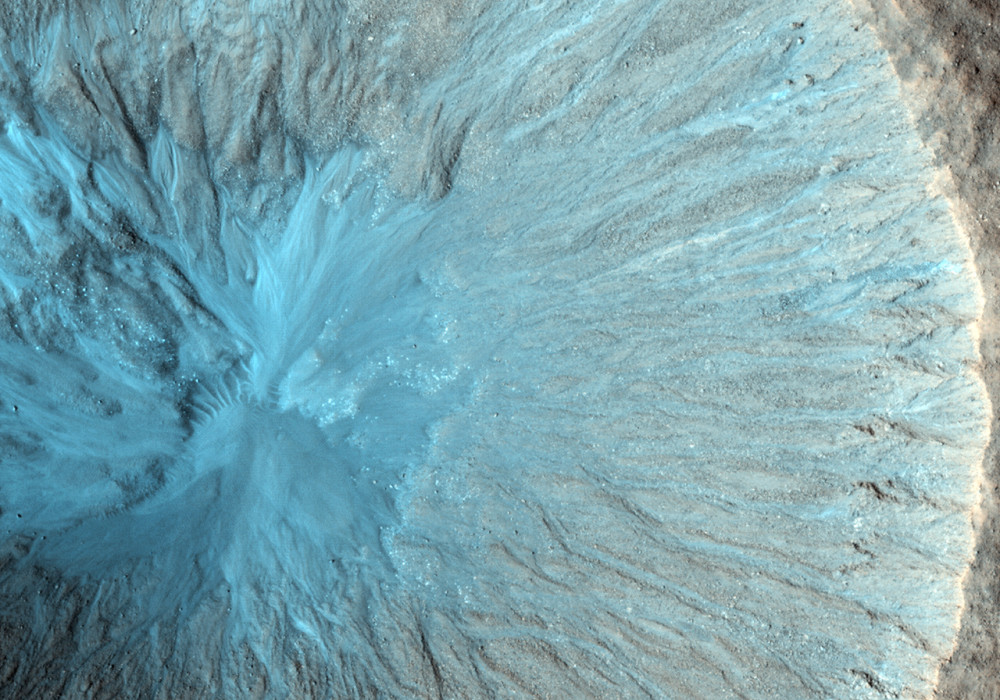In this image, we can clearly see the ejecta of this crater, and that tells us the crater appears young and well-preserved. “Ejecta” refers to the material that is excavated from an initial impact and settles back to the surface.
One way we describe a crater as being young is to observe the crater rim. If the rim of a crater doesn’t appear that eroded, we often call it “sharp” and “young,” even though the impact may have occurred an extremely long time ago.
Given the latitude and proximity to gullies on mesas and massifs in this region, there could also be mid-latitude-type gullies in this crater. At HiRISE resolution, we can get a better look at the ejecta, its distribution and possibly characterize any subsequent modifications we can see in the crater walls.
Written by: HiRISE Science Team (audio by Tre Gibbs) (9 May 2012)
This is a stereo pair with ESP_027866_2320 .
More info and image formats at http://hirise.lpl.arizona.edu/ESP_026099_2320
Image: NASA/JPL/University of Arizona
